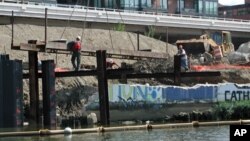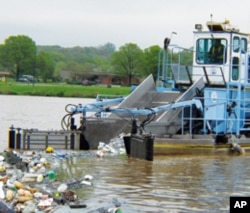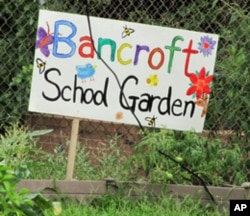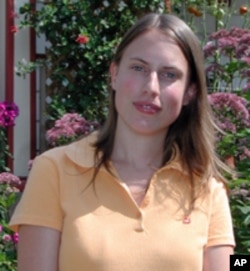Snow Hill is a sleepy town on the banks of the Pocomoke River on Maryland's eastern shore. Bald cypress trees and abundant fish and wildlife make the dark waters and wooded shores of the Pocomoke popular with boaters and hunters. Mayor Stephen Matthews moved to Snow Hill in 1991. The retired DC policeman inherited an aging sewer system badly in need of repair, he says, "but couldn't afford to build a new one."
Big storms overwhelm small town's sewer plant
A few years ago builders proposed a new development that would more than double the size of the town. The company sweetened the deal with the promise of a new sewage treatment plant. But bad economic times killed the plan and today Snow Hill earns income to help pay its sewer bills by allowing neighboring communities to truck and dump contaminated landfill runoff and effluent from septic tanks in Snow Hill's waste water treatment plant.
Matthews says the deal comes with an environmental cost, especially after a big storm. "You get water, mixed with sewer waste and then all of a sudden, it's like a tsunami hitting the sewer plant," he says. "It does reach some points where it comes in at such speeds that we have to open the flood gates and let it run [into the river]."
Antiquated sewers are common across the region. From the cabin of his small boat in Washington, D.C., Ed Merrifield, president of the Potomac River Keeper environmental group, patrols the river for violations of federal and state laws. He says rain water and sewage run through the same pipes and when it rains there's trouble. "It's a mess," he says. "You don't see the sewage directly, but you see everything that is still floating on top. And we have run tests here on the water quality, and it's terrible."
Washington D.C. metro area storm runoff flows into the Potomac River
Overflow into the Potomac comes from 53 pipes that carry rain water and sewage. The Washington Water and Sewer Authority serves two million people in Washington, D.C. and the Maryland and Virginia suburbs. Ordered by a court decree to fix the problem, the authority is building a 2.5 billion dollar subway-sized tunnel system to manage the storm water and sewage. The plan is expected to reduce storm overflow into the Potomac by 96 percent.
Simple solutions for urban water pollution
Seventeen million people live in the Bay watershed. According to the 2009 Chesapeake Bay Program Annual report, suburban and urban runoff is the fastest growing source of pollution. Fertilizers from lawns, oil from cars, pet waste and runoff from building sites move quickly over paved surfaces into storm drains - and eventually, into the Bay.
The District Department of the Environment in Washington is addressing the problem through a number of initiatives. George Hawkins, the department's director, cites the rain garden next to a playground of a local elementary school with its bushy shrubs, shade trees, sunflowers, and a bounty of late summer vegetables as one example. "This area absorbs storm water. The storm water going into the ground here and not going into the stream, or into the storm system, he says. "It is filtered through these plants and roots so a lot of the pollutants have been removed."
With a grant from the District's River Smart Home Program, city resident Lesly Baesens has transformed her property. Baesens planted native species that hold water, installed a rain barrel that collects water for garden use, and put in a porous sidewalk that allows water to seep into the ground rather than flow to the street. Even with all these amenities, she says, she wants to do more. "I want to get rid of most of our lawn because I feel like putting plants in is a lot more beneficial than the lawn. And I would much rather care for plants that will attract wildlife, butterflies [and] hummingbirds."
While Washington, D.C., constitutes only 1 percent of the watershed, George Hawkins says Chesapeake Bay friendly programs can work for residents and builders throughout the region. "This is a good business model as well as a good environmental model," he says. Hawkins would like to see enforceable pollution standards in place for cities and suburbs across the region. He says urban areas as well as farms must be held accountable for the pollution they create.











